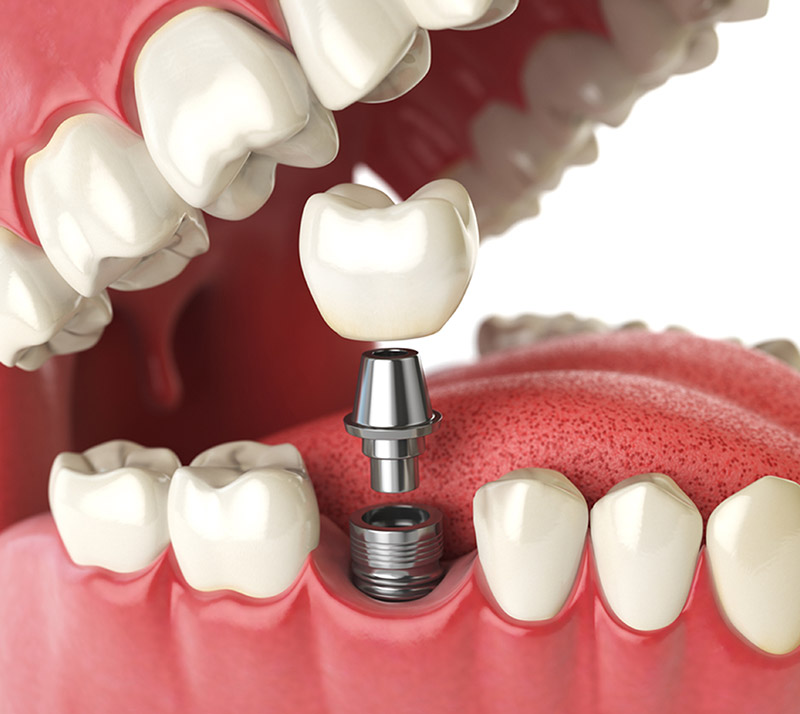Dental Implants Affordable Holland MI - Dental Implants Procedure: What to Know
Dental Implants Affordable Holland MI - Dental Implants Procedure: What to Know
Blog Article
Implants Dental Procedure Muskegon Heights MI - Dental Implants: Tooth Replacement Solution
The journey toward dental implants begins with an intensive assessment of the jawbone's condition. When there's inadequate bone density to support an implant, bone grafting becomes an useful source important process to recreate a secure basis. Understanding how much bone grafting is required for dental implants greatly influences the Source remedy plan, timeline, and general success rate.
The amount of bone grafting required depends on multiple elements, including the extent of bone loss, the implant's measurement, and the particular location inside the mouth. In cases of serious bone loss because of periodontal ailments, trauma, or extended tooth loss, more in depth grafting may be necessary. Conversely, if the bone loss is minimal, a smaller graft might suffice.
Dental Implant Dentures Grandville MI - Dental Implants: A 5-step plan to restoring your teeth
The analysis course of typically involves imaging studies such as X-rays or 3D scans, allowing the dental skilled to visualise the bone structure (Dental Teeth Implants Muskegon MI). These images assist in figuring out the quality and amount of present bone. If the bone is deemed insufficient, the dentist will then outline the appropriate grafting procedures
Grafting may be sourced from numerous areas. Autografts, which involve harvesting bone from the affected person's own physique, are sometimes deemed the gold normal. These offer glorious integration with the prevailing bone but include the disadvantage of additional surgery. Other options embody allografts, which use donor bone, and synthetic supplies designed to mimic natural bone. Each option has its personal implications on healing and success rates.
After figuring out the required amount of bone grafting, the dental skilled will create a tailored plan for the affected person. This plan might include the timing of bone grafting in relation to the implant placement. In some circumstances, a graft could be carried out simultaneously with the implant surgery. Alternatively, in additional complicated situations, a separate therapeutic period is indicated.
Healing timelines range based mostly on the person's health, the extent of grafting, and the sort of graft used. Generally, the therapeutic of a bone graft takes a quantity of months before an implant could be placed. During this time, bone regeneration occurs, resulting in a stable base for the implant.
Implant Dental Grandville MI - Dental Implants: What You Should Know
Patients often wonder about the risks associated with bone grafting. While problems similar to infection or graft failure are potential, these events are relatively rare. Adhering to post-operative care directions and attending follow-up appointments decrease risks and promote therapeutic.
Once the bone has adequately healed, the dentist assesses the graft's success by evaluating the bone density and stability. If every thing looks favorable, the next steps toward inserting the dental implant can begin. The success of this next step largely hinges on the quality of the bone graft and its integration with the surrounding bone.
Cost issues play an important role in the decision-making process. The expense of bone grafting varies based on supplies used, the complexity of the case, and geographic location. It is crucial for sufferers to debate funds upfront to keep away from sudden payments later in the treatment.
Dental Implants Near Me Grandville MI - Affordable Dental Implants
Also, sufferers should have sensible expectations regarding the timeline and outcomes. Many elements can affect how much bone grafting is required and its overall effectiveness. A collaborative strategy involving the patient and the dental group not solely ensures clarity but in addition enhances the possibilities of a successful end result.

Maintaining good oral hygiene and common dental visits following the process is significant. These practices can prevent issues and ensure that both the graft and the implant stay stable over time. The ongoing relationship with a dental professional is essential, especially within the months following the procedures.
In conclusion, understanding how a lot bone grafting is needed for dental implants encompasses a multi-faceted method that considers bone quality, grafting types, therapeutic time, and overall patient health. The stability between achieving the desired aesthetic and practical outcomes while minimizing risks and problems is on the heart of dental implant procedures. The journey could also be extensive, however a well-planned approach maximizes the probabilities for a profitable, long-lasting result in restorative dental work.
- Determining the amount of bone grafting required for dental implants typically hinges on the preliminary bone density and volume of the patient's jawbone.
- Each affected person's case is unique; elements corresponding to previous extractions, periodontal disease, or trauma can influence the necessity for grafting.
- A 3D imaging scan is often conducted to assess the precise dimensions of the out there bone and inform the grafting technique.
- The sort of dental implant placement—immediate or delayed—may dictate the quantity of bone grafting necessary for stability and integration.
- Different types of graft materials, similar to autografts, allografts, or artificial choices, can impression how much grafting material is needed.
- Assessing the patient's general health, age, and life-style habits can affect the healing process, influencing graft volume requirements.
- The depth and placement of the implant can necessitate varying amounts of graft material to secure optimum outcomes.
- Successful integration of the dental implant usually depends on sufficient bone density, leading to a tailored grafting approach for each individual.
- Consultation with an oral surgeon will provide a clearer estimate of the bone grafting needed based on comprehensive evaluations and imaging results.
- Post-grafting healing time varies; thus, a careful evaluation is essential to determine the final amount of grafting required for successful implantation.undefinedHow a lot bone grafting is required for dental implants?
Implants Dental Near Me Walker MI - Dental Implants services
What is bone grafting and why is it necessary for dental implants?undefinedBone grafting is a surgical process that adds bone or bone-like materials to the jawbone. It is necessary for dental implants when the prevailing bone is insufficient to help the implant, guaranteeing stability and long-term success.
How do I know if I want a bone graft for dental implants?undefinedYour dentist or oral surgeon will evaluate your jawbone through x-rays or 3D imaging to discover out its density and volume. If they find that you just lack enough bone, they will suggest a bone graft before continuing with the dental implant.
Dental Implants Near Me Holland MI - Multiple Tooth Dental Implants
What elements influence the quantity of bone grafting needed?undefinedFactors include the size and site of the implant website, the health and density of present bone, and particular person therapeutic capability (Dental Implants Near Me Wyoming MI). These elements help the dentist determine the suitable quantity of graft materials wanted
Are there several varieties of bone grafts used for dental implants?undefinedYes, there are several sorts, together with autografts (from your personal body), allografts (from a donor), xenografts (from animals), and synthetic graft materials. Each type has distinctive advantages and could be selected based on particular person affected person needs.
Denture Dental Implants Walker MI - Dental Implants: What You Should Know
How long does the bone grafting procedure take?undefinedThe period varies based mostly on the complexity of the grafting course of and the extent of the area treated. Generally, a bone grafting process can take wherever from 30 minutes to some hours, relying on the precise circumstances.
What is the recovery time after a bone graft for implants?undefinedRecovery times can differ, but typically, initial healing may take a quantity of weeks, whereas full integration of the graft with the bone can take several months. Your dentist will present a personalised timeline primarily based on your state of affairs.

Will I expertise pain after the bone grafting procedure?undefinedSome discomfort is common after a bone graft, however it's usually manageable with prescribed pain treatment. Most sufferers report that pain diminishes significantly within a couple of days.
Full Mouth Dental Implants Muskegon Heights MI - Dental Implants for Multiple Missing Teeth
How does bone grafting have an effect on the overall dental implant timeline?undefinedBone grafting may extend the general timeline for receiving dental implants, because it requires a healing period earlier than implants may be placed. This can add a number of months to the process however is important for a successful implant placement.

Are there risks associated with bone grafting for dental implants?undefinedLike any surgical procedure, bone grafting carries some risks, corresponding to infection, graft failure, or issues associated to anesthesia. However, when performed by an experienced professional, these risks are typically low.
Can I have dental implants placed instantly after a bone graft?undefinedIn many cases, dental implants cannot be positioned immediately after a bone graft due to the want for the graft to integrate into the prevailing bone. However, some techniques, like quick loading, could enable for this beneath specific conditions. Your provider will advise you on the greatest choice based in your circumstances.
Report this page